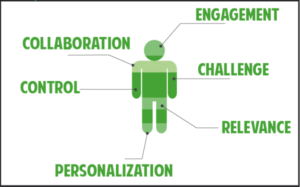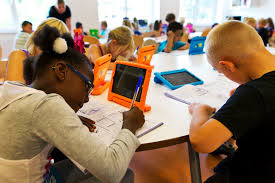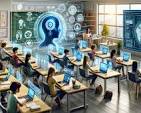Technology Enhances Student Learning

Integrating technology in the classroom can significantly increase student engagement by transforming passive learning into active sessions. Interactive whiteboards, web-based quizzes, and other learning software for example, promote active engagement and more in-depth processing, which can improve academic achievement. When deployed intentionally as an element of a planned student-centered instructional approach they transcend mere novelty and allow for a shift from teacher-led lectures to interactive, learner- oriented areas.
Enhanced Participation and Personalized Education

Incorporating technology into the classroom promotes higher levels of student engagement and allows for personalized learning experiences —fundamental elements of effective pedagogy. As Explorance (2025) describes, classroom technologies such as digital libraries and study apps allow immediate access to academic materials, enhancing students’ understanding of topics. Augmenting this, Walden University points out that technology accommodates different learning styles—visual, kinesthetic, and auditory—and radically enhances collaboration and motivation by converting challenging topics into interactive experiences.
Preparing Students for the Digital Future

Along with enhancing immediate academic outcomes, technology prepares students to meet future challenges in higher education and the workforce. As Walden asserts, almost 90% of students view classroom technology as essential for building digital literacy and preparing for careers [Walden University] Likewise, TechHUB (2019) identifies technology as instrumental for learning 21st century skills and bridging socioeconomic gaps providing students from varied backgrounds the tools required for active participation in academic and professional environments. Implementation of technology is not merely beneficial but fundamental for creating the skills required in an ever-digitized environment.
Efficiency, Adaptive Feedback, and Academic Success

Technology also increases instructional efficiency and facilitates data-informed pedagogical decision-making. Intelligent tutoring systems (ITS) provide real-time, adaptive feedback and have been proven to increase student performance substantially a median effect size of 0.66, outperforming conventional tutoring methods. Augmented Reality (AR) platforms, as well have shown strong results: Customized AR experiences enhance content comprehension and engagement. In addition, studies on audience response systems (such as clickers) show they increase engagement and knowledge retention, with 94% of faculty confirming increased participation and 74% reporting academic benefits. This shows that technology allows instructors to employ formative assessment methodologies and adjust instruction in real time.
Critique and Balanced Integration

On the contrary, not all educational technology yields transformative gains among risks are cognitive overload, fragmented application, and overdependence on tools. Hamilton and Hattie (2021) warn that ed-tech investment precedes pedagogical integration: too many tools have unproven effectiveness and can disjoint instructional design without instructional alignment.
They recommend rigorous audits of current technology, focused teacher training, and instructional goals over blanket adoption. This viewpoint is replicated in investigations into interactive whiteboards, which demonstrate that educational effect relies on sustained, reflective and pedagogically informed use. Accordingly, successful integration should not be gauged by tool adoption but by pedagogical coherence and teacher capacity for meaningful use.
Conclusion
Technology integration in the classroom has obvious advantages— increased engagement, tailored learning, timely feedback, and readiness for digital contexts—backed by a strong and expanding empirical research base. These advantages, however, are predicated on deliberate, pedagogically informed implementation. Hamilton and Hattie’s critique highlights that digital technologies need to be incorporated strategically, with teacher training, ongoing instructional design alignment, and evidence informed assessment. Under these conditions, technology can be a valuable and transformative partner in augmenting student learning and academic achievement.
